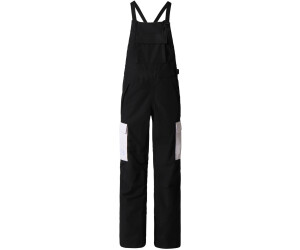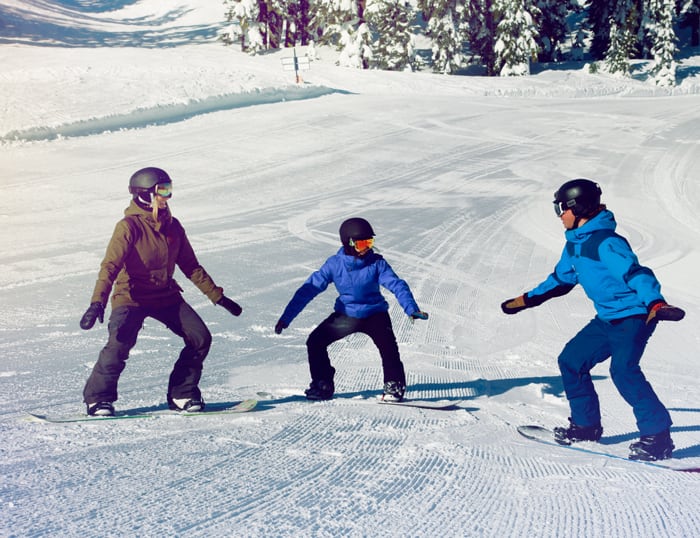
Cross country skiing can be a great way to get your exercise in during the winter months. Not only is it a great workout, but it's also a fun activity that will get the family moving. To make the most of the experience, however, it's best to make sure you're equipped with all the right equipment. These are some tips to help you choose the right gear and get going.
A good pair of boots is the first thing you should consider. They should be flexible and warm enough to keep your feet warm. A layer of insulation will protect your skin. If it is cold, a lightweight waterproof one will also be useful. Finally, don't forget to wear a hat and gloves.
A topographic map is an additional important item that you should consider. This will allow you to locate your position on the trail. Also, ensure that you bring a GPS and compass so you can properly navigate.
It is also important to practice the basics. Begin by standing with your feet together. Once you're in a balanced position, do a forward step and a diagonal walk. Move forward with a push from the pole in your front and slide down on the trail every now and again.

It's not always easy to find the most efficient way to glide down the trail. There are many options, so you might need to modify your technique depending on where you ski. It is a good idea to seek the guidance of a professional guide if you aren't sure which method to choose.
Cross country skiers have two options. Classic skiing is the more traditional version, involving two long skinny skis with a grippy base. The classic ski makes a great starting point for anyone looking to become a cross-country skier.
Although classic skis can be a great way of learning how to glide down trails, they are not the most advanced. Telescoping poles can also be a great option. It allows you to adjust the length of your poles, and it's also a good way to get a full body workout.
An alternative option is to invest in sunglasses. This will not only look great, it will shield your eyes from harmful UV rays.
It's not scientific, but cross country skiers who use a pole to grip the terrain have a stronger grip. Tighten the strap if your hand falls below the top of a pole.

There are many other items you will need to complete your trip, in addition to the classic and Telescoping skis. You should bring a quality jacket and a topographic map. Don't forget to drink lots of water!
Cross country skiing is an enjoyable and rewarding sport, no matter if you choose to go it alone or join a class. Don't let the winter blues hold you back.
FAQ
What documents should be kept handy while on the road?
Keep copies of important documents at home for easy access while on the road. Also, keep copies of your passport, driver’s licence, and other identification cards, along with any credit card information, in case you need them, to make it easy to access when you travel.
It is a good idea if you have a photocopy your passport so that it can be used in the event of a need.
Include copies of your reservation and itinerary. These will help you remember where you are going and what you plan to see.
Keep a copy of the flight ticket and details for your hotel reservations. This way, you'll be able to contact someone back home if you get into trouble.
It's a good idea to never leave valuables unattended. Make sure you have a place to store your valuables, such as a money belt or in your luggage.
Check your bag before you go to prevent losing expensive items.
Remember, it's safer to keep things simple rather than trying to plan everything.
Relax and enjoy your trip!
What size luggage should I carry?
The amount of luggage you take depends on the length of your trip. For a flight, hand baggage is not necessary, typically less than 20 kg. You will need more space if you travel by train or bus.
At the airport, you will receive a form that you need to complete with your details. This will include information such a weight of your bags, and whether you need assistance with checking them in.
You should always check this before leaving home. If you don't, then you could find yourself waiting around for hours while everyone else checks their luggage.
Traveling light is the best option, because you never really know what could happen. It is possible to lose your bag and not have something to wear.
What can I pack in my suitcase?
You should always have at least two pairs of shoes. Two pairs should be sufficient for everyday walking and one for trips to the beach.
It is important to ensure you have enough clothes for both. When you fly, it is essential to bring enough clothing.
If you're planning on staying somewhere longer, you might want to think about bringing along a few changes of clothing. You won't feel uneasy when shopping for new outfits.
Comfortable shoes should be worn if you are taking the bus or train. Also, if driving, bring extra tires.
Also, remember to bring plenty of toiletries, such as shampoo, toothpaste, moisturizer, deodorant and toothpaste.
Last but not least, make sure you have a flashlight, an insect repellent, sunscreen and sunglasses as well as a first aid kit.
Do not forget to pack all your essentials in one bag. You'll save both time and space.
Last but not least, make sure to bring a small towel & washcloth. They will be very useful after a long day of sightseeing.
What should you pack for a vacation?
It's important to decide what you want for your holiday. It's more than packing clothes. Consider where you're going and how much time you'll be staying there.
You need to think about what activities you would like to participate in. For example, if you are going to an exotic destination, then you may want to try scuba diving. Participating in local festivals or events is a good idea if you're planning on staying somewhere for a longer time.
To ensure that your health is taken care of, it is essential to inform those who will be taking care of you about any issues.
Statistics
- According to Maori legends, this park holds 14 fjords that were all carved by a giant stonemason with an adze. (busytourist.com)
- Pack sweaters, jackets, and underwear in reusable compression bags creating up to 75% more space in your luggage. (wikihow.com)
- Case in point: the private island of Ilha Caldeira, less than seven miles off the coast as part of the Primeiras and Segundas Archipelago, is located within the marine-protected area with 20 percent of the country's intact living coral. (travelandleisure.com)
- Alcoholic beverages with 24% alcohol or less are not subject to limitations in checked bags. (tsa.gov)
- They're also likely to offer babysitting services, in case you'd like to have dinner one night after 7 p.m. (travelandleisure.com)
External Links
How To
How to plan for your next vacation
Booking flights, hotels, car rental, and activities are just a few of the many aspects involved in planning a trip. It includes important considerations such a budget, destination, weather forecast, time frame, etc.
These points are essential to keep in mind when you plan your next vacation.
We have prepared a step-by, step guide to help with your next vacation planning. This guide was compiled based upon customer feedback and experience. We hope you find this guide helpful and easy to follow when planning your next vacation.
Steps:
-
Plan your Budget - Planning your budget is one of the most important steps in preparing for a trip. Before you start to think about where to go or what to do, it is important to determine how much money you have available for your trip. If you don’t have sufficient money, you may have to cancel your travel plans.
-
Book Flights - The first thing you should do after deciding on your budget is book your tickets. You should ensure that you get the best deal possible at the lowest price. Also, check if airlines offer any special deals during certain seasons. These deals could save you a lot of money.
-
Pick Your Destination. Once you've booked your tickets, the next step is to decide where to travel. Numerous factors go into choosing your destination.
-
Find Accommodations. There are many choices for accommodation. You can choose from affordable hostels or luxury suites. It all depends on what you want and how much space you have. For example, staying in a hotel may not be ideal if you're looking for a place close to the city center. You may prefer quieter areas away from the crowds and a homestay could be better suited for your needs.
-
Select Activities and Attractions. Now, after you've selected your accommodation it is time to pick the activities or attractions that you would like to add to your itinerary. Depending on your length of stay, you may choose to add or remove activities.
-
Determine your schedule - After you've chosen the attractions and activities that you would like to include in your itinerary, it's now time to create it. You should follow a set schedule to get the most out of your trip. But, it's possible to enjoy your trip more if your schedule is flexible.
-
Make an itinerary - This is where you include all details about your trip. These information can include flights, accommodations, activities and restaurants. You will need to record them all and make a list.
-
Research Online - Do your research online before you travel. Find out what other travelers have to say about different destinations by reading reviews and testimonials. This will enable you to plan accordingly.
-
Take care when packing. Too many clothes is not a good idea. Instead of bringing five sets of clothes, bring three. Make sure you bring clothes that are appropriate for the area.
-
Be prepared. Have everything ready before setting off for your trip. You don't want to waste time searching for important documents while you're still in transit.